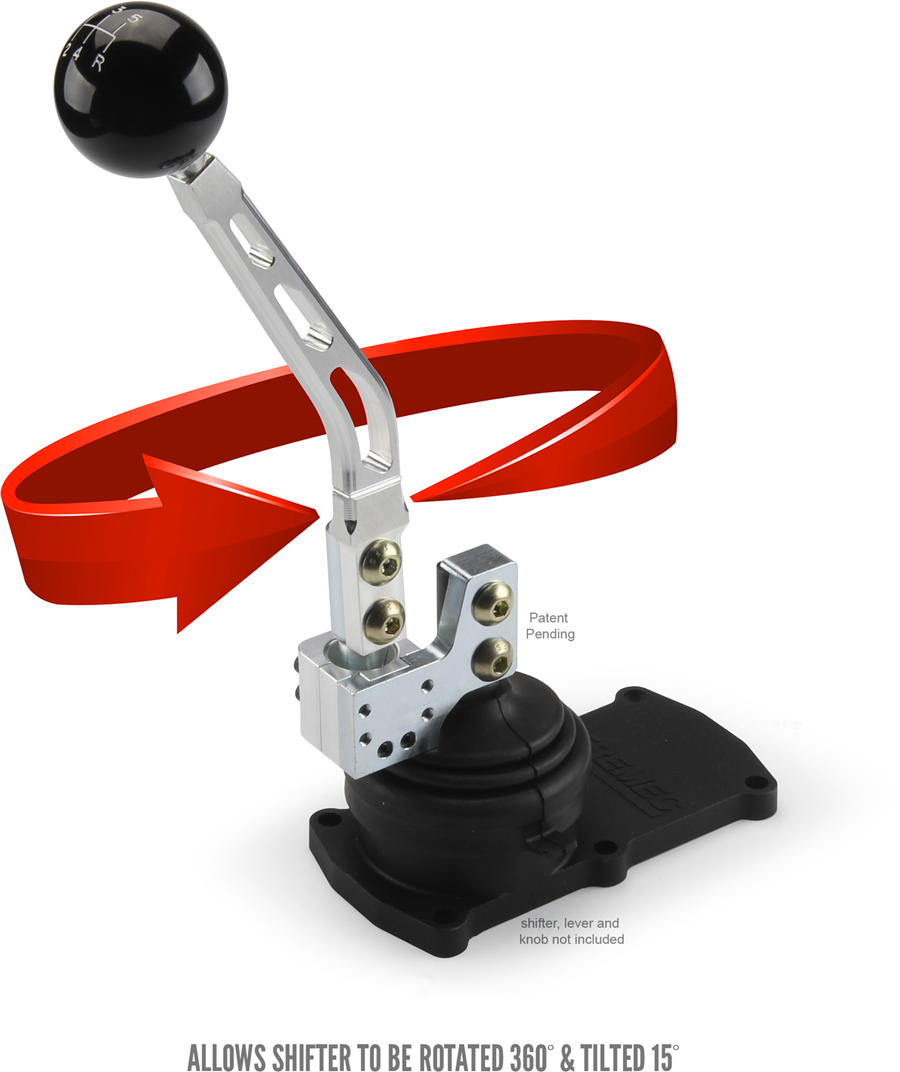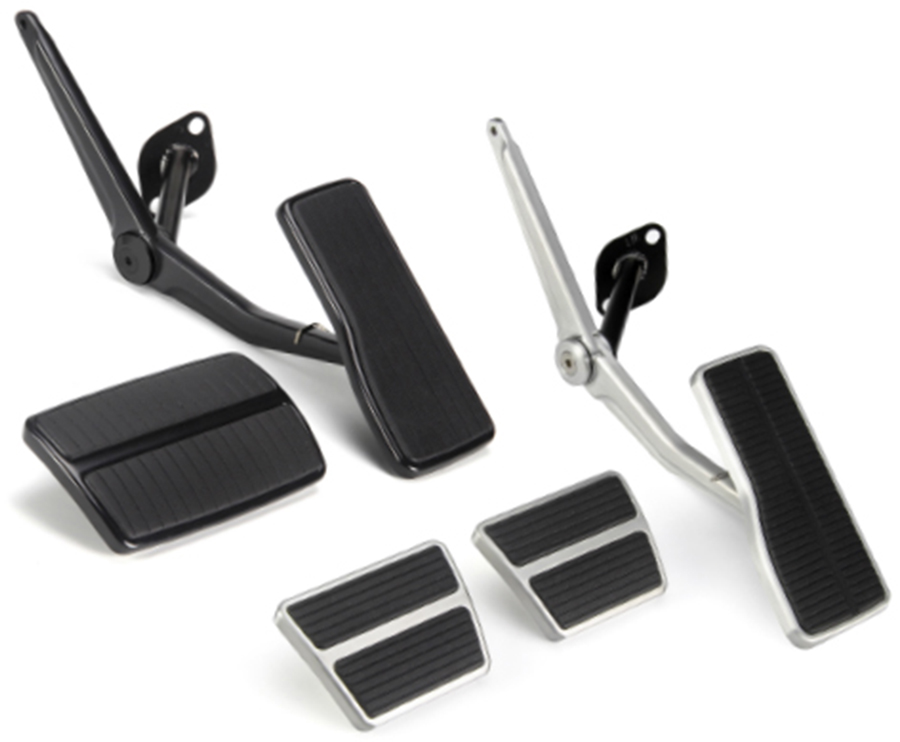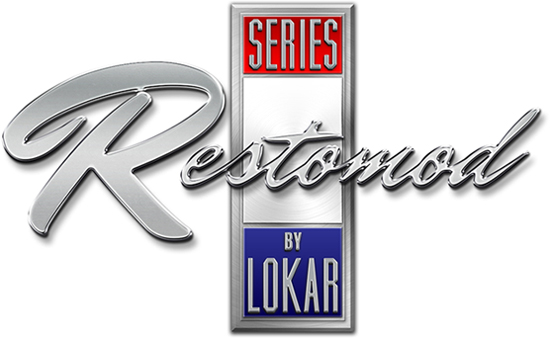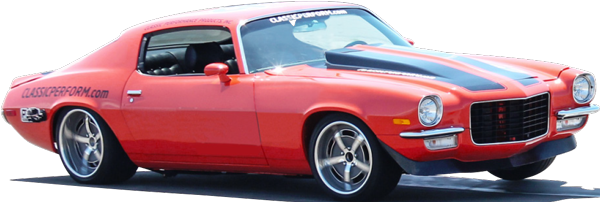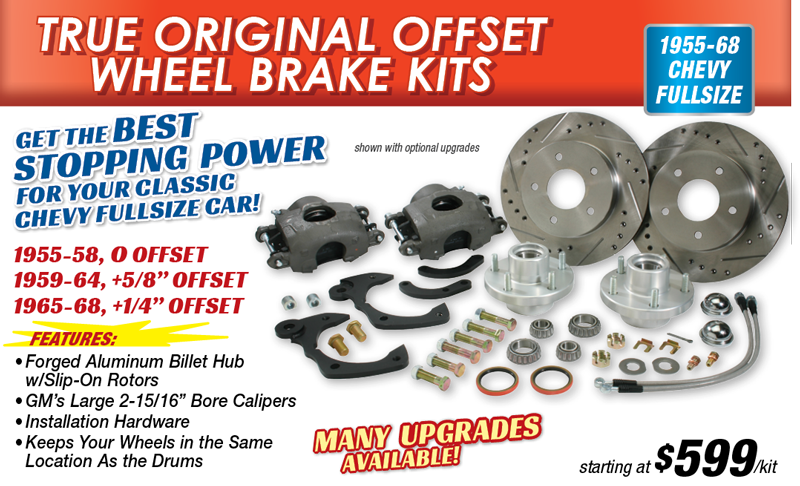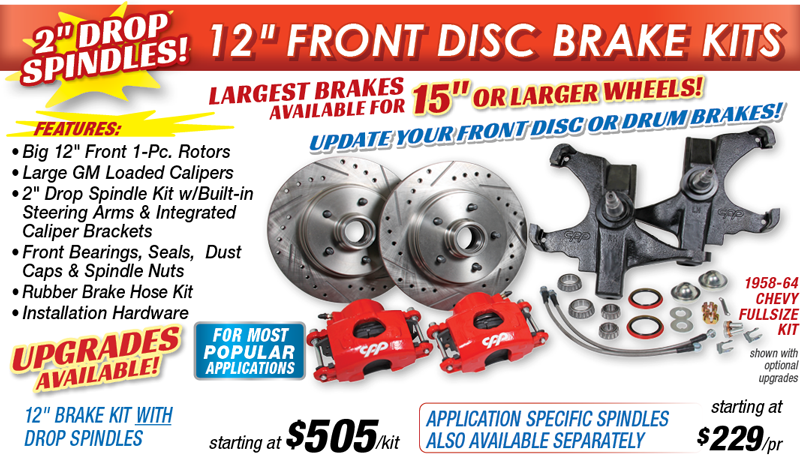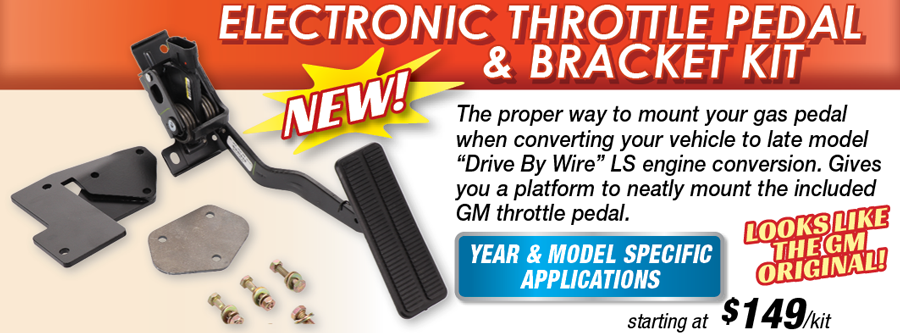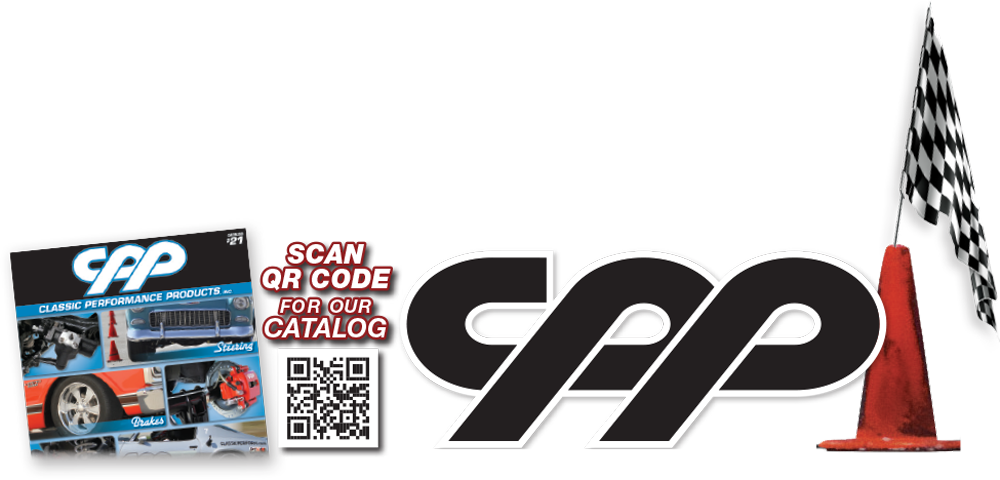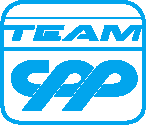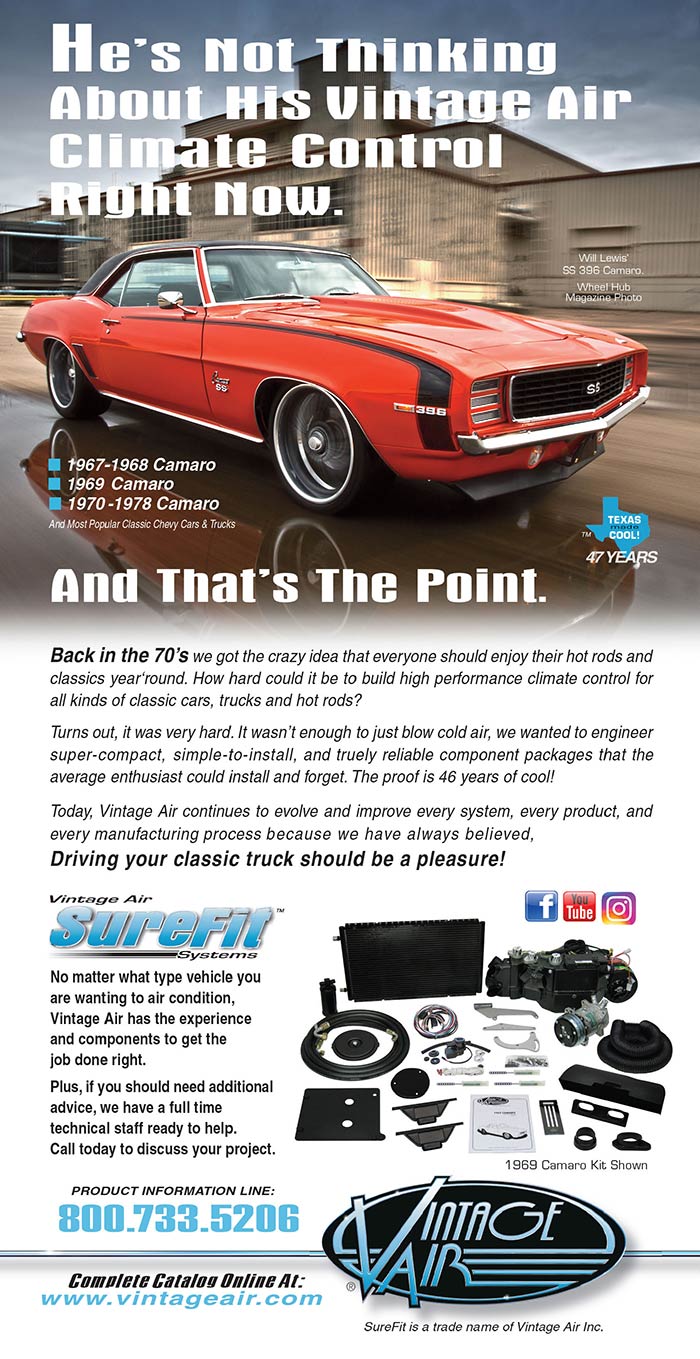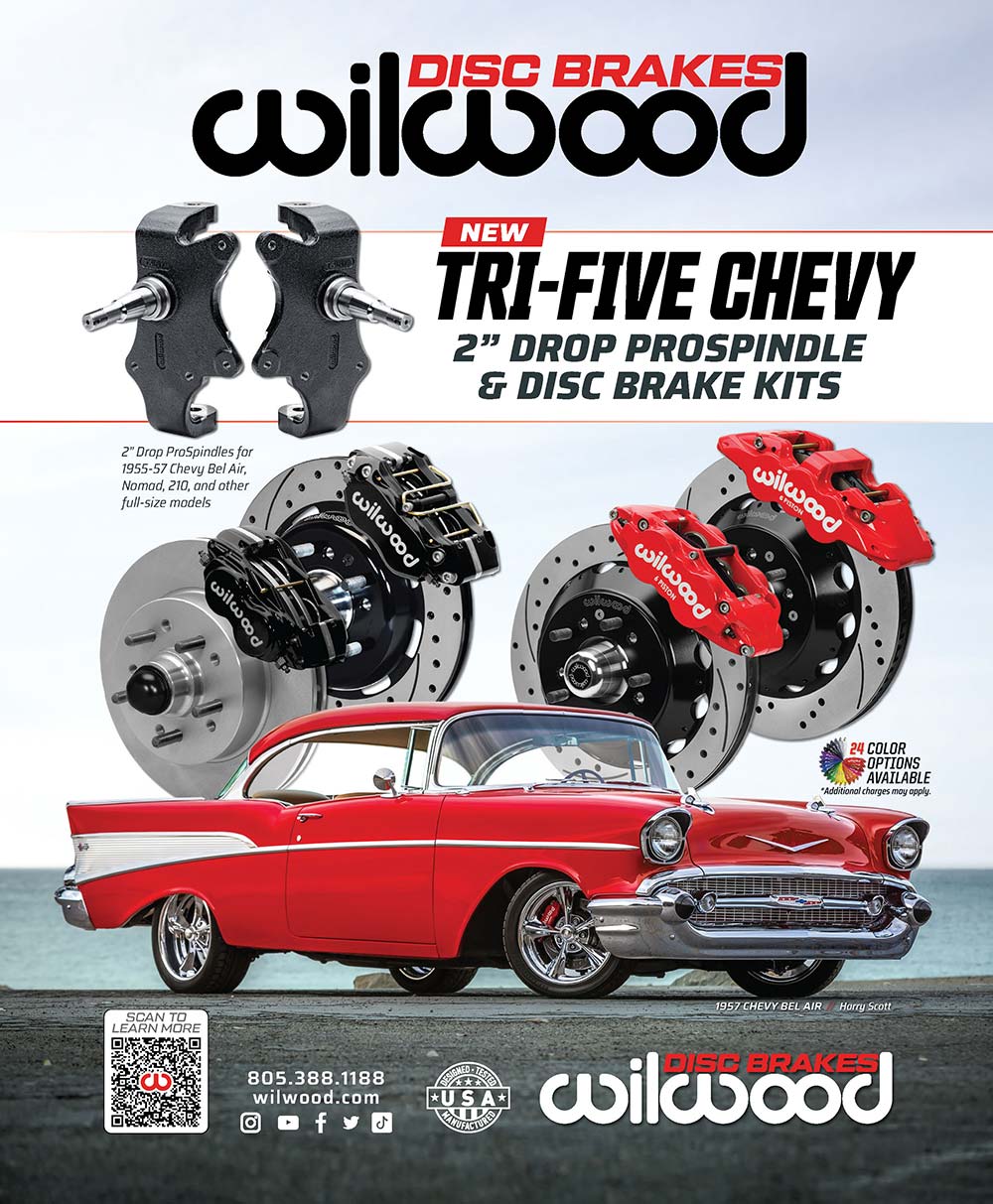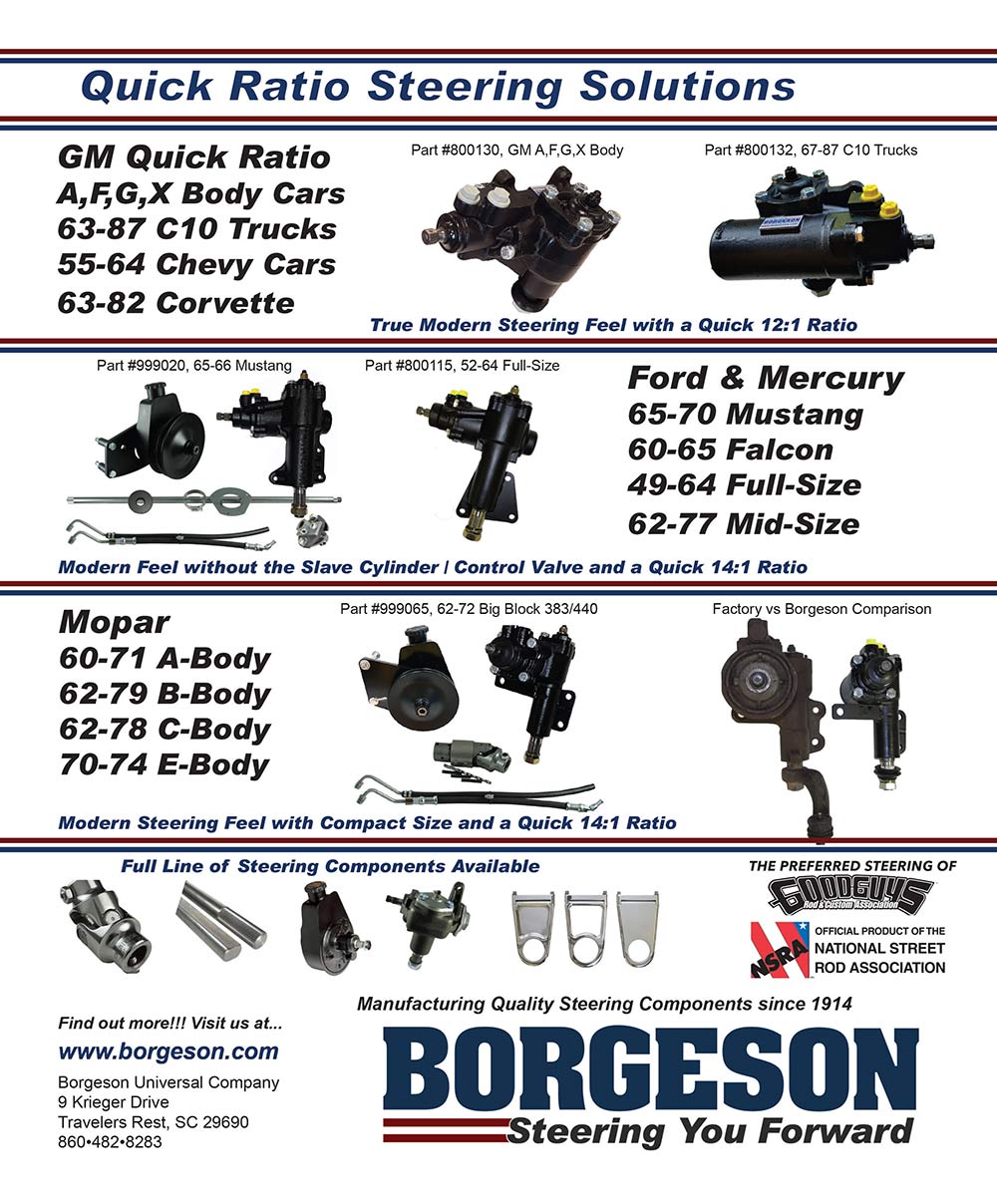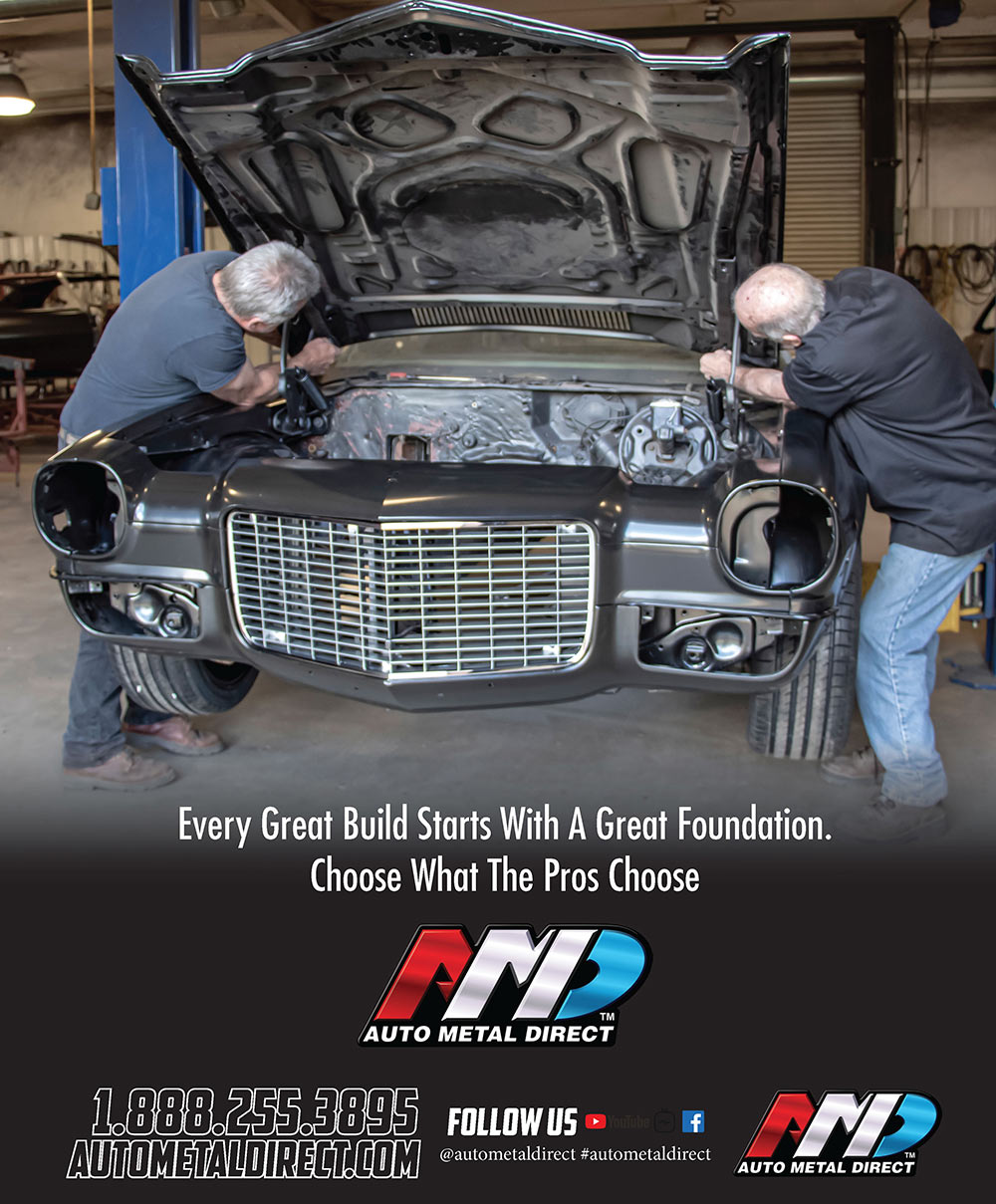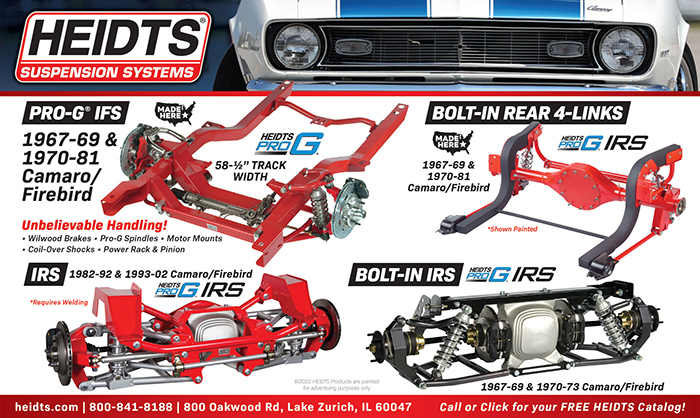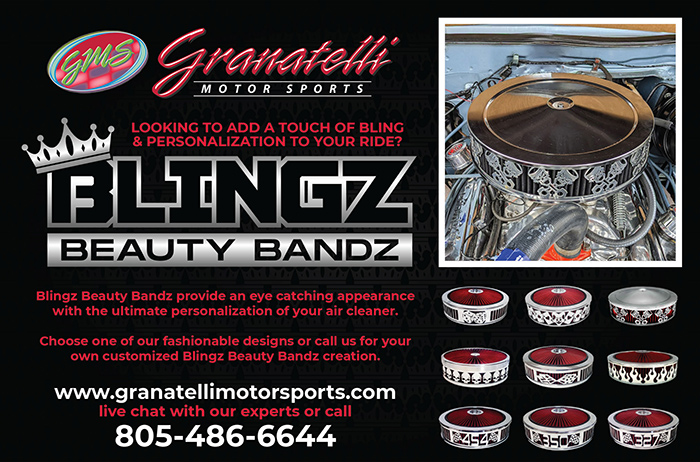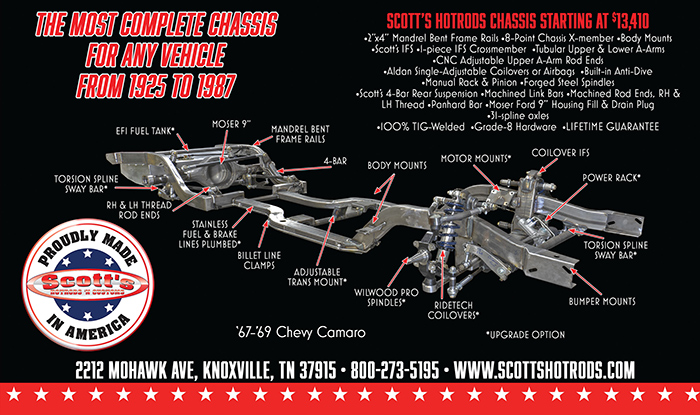Setting Correct Idle Mixture
 TOC
TOC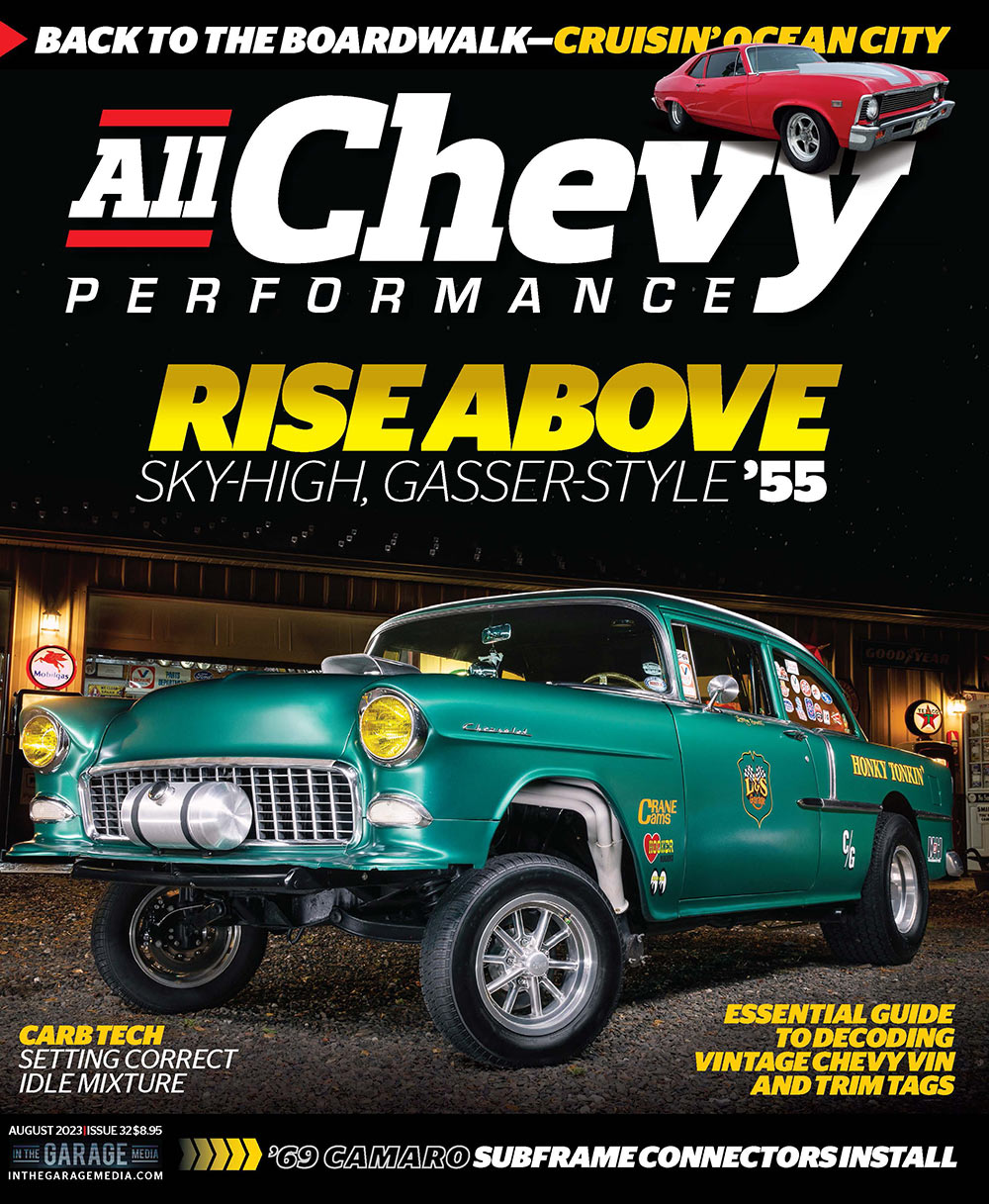
Photos by John Machaqueiro

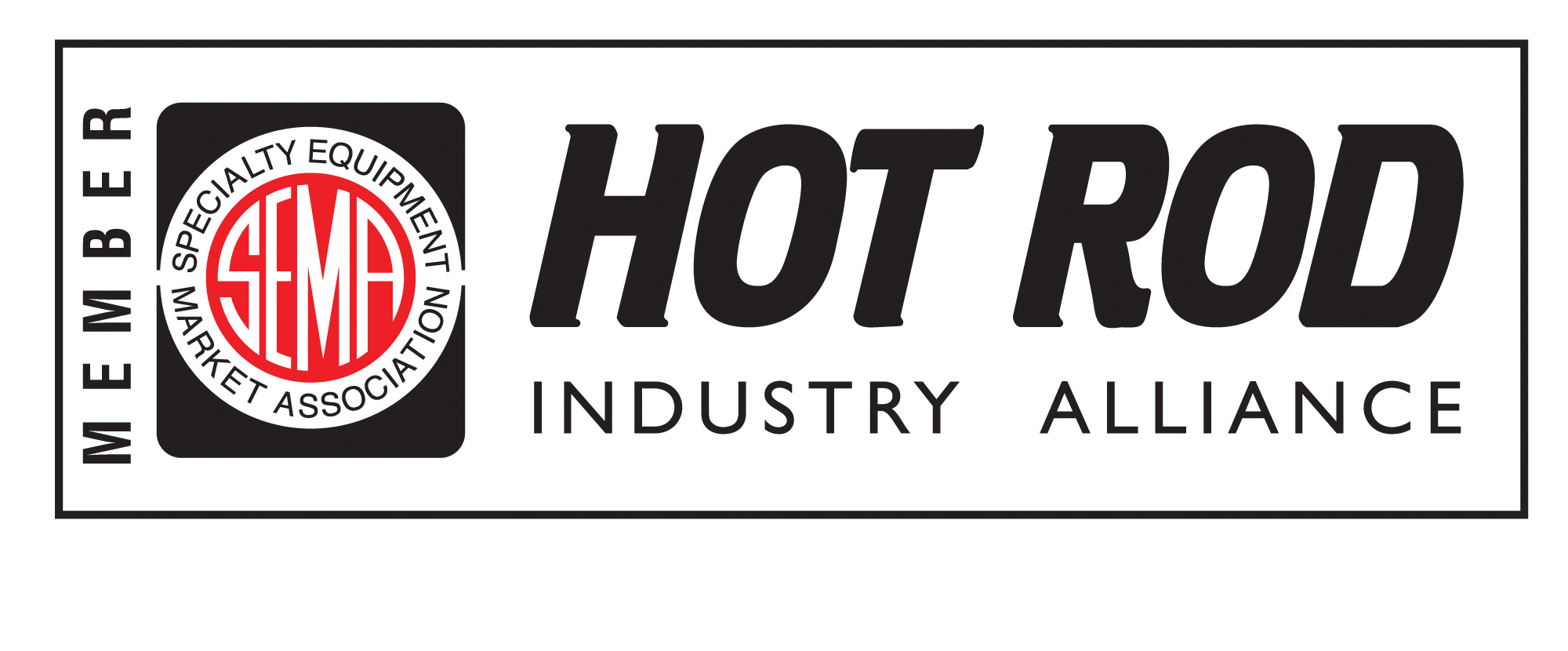
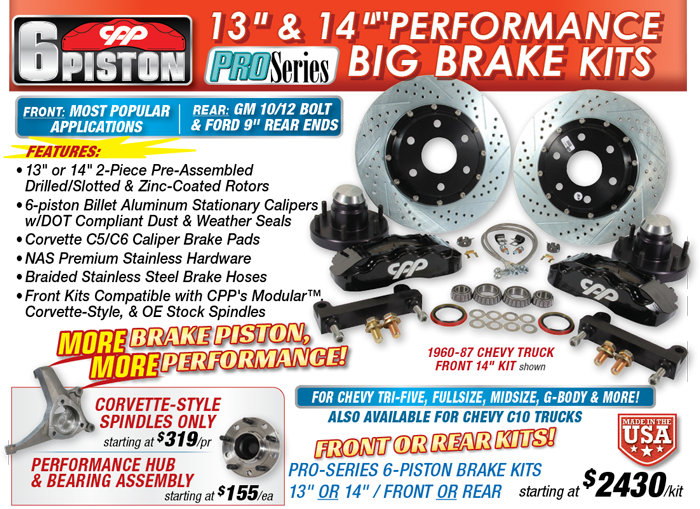
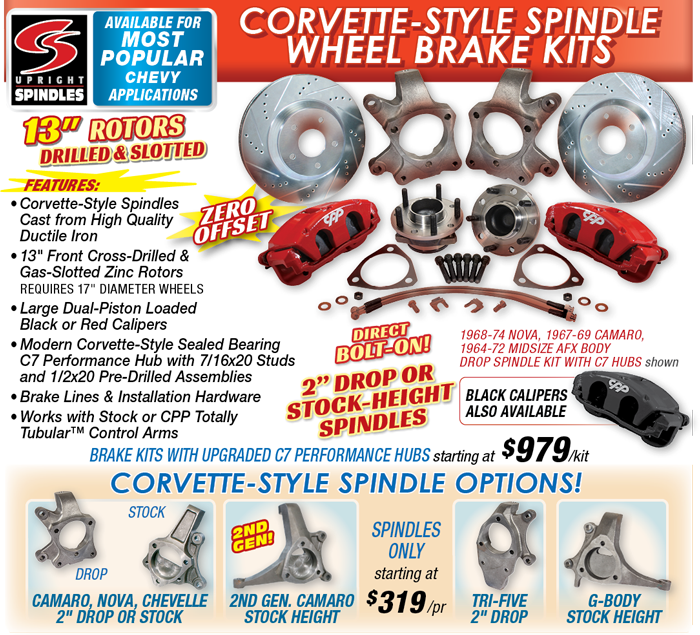
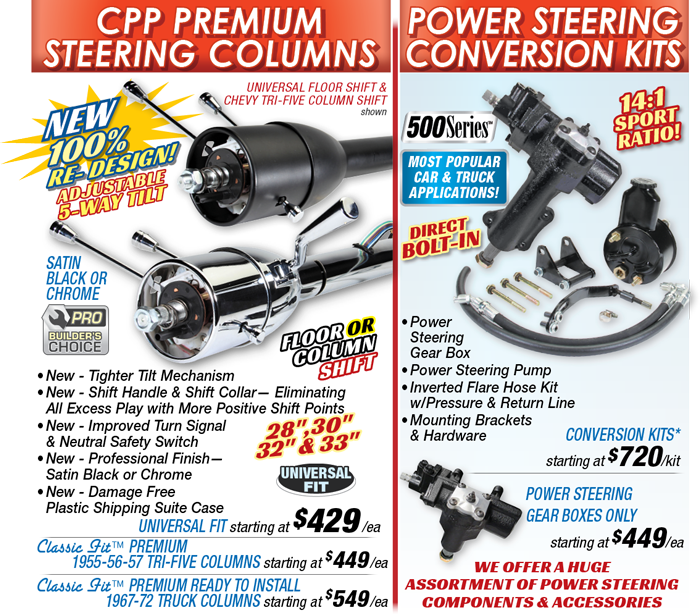
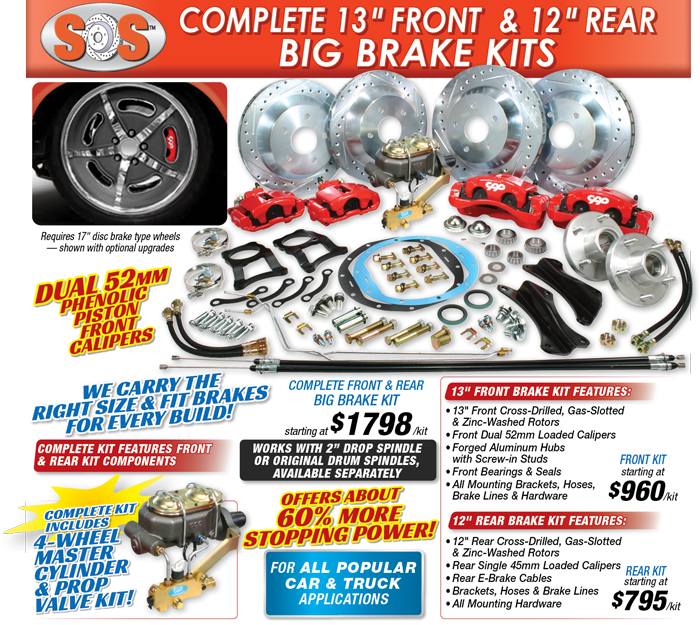
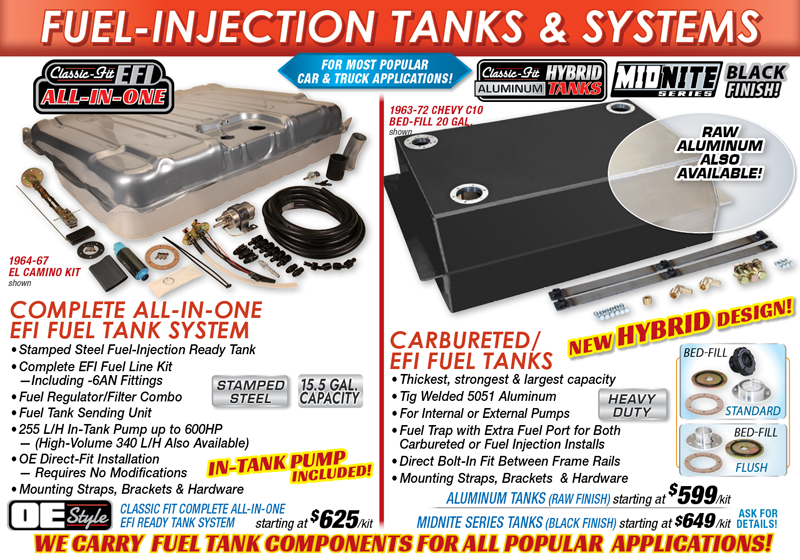

378 E. Orangethorpe Ave. Placentia, California 92870
#ClassicPerform

Wes Allison, “Rotten” Rodney Bauman, Shawn Brereton, Tommy Lee Byrd, Ron Ceridono, Grant Cox, John Gilbert, Tavis Highlander, Jeff Huneycutt, Barry Kluczyk, Scotty Lachenauer, Jason Lubken, Ryan Manson, Jason Matthew, Josh Mishler, Evan Perkins, Richard Prince, Todd Ryden, Jason Scudellari, Jeff Smith, Tim Sutton, and Chuck Vranas – Writers and Photographers
Travis Weeks Advertising Sales Manager
Mark Dewey National Sales Manager
Patrick Walsh Sales Representative
ads@inthegaragemedia.com
AllChevyPerformance.com
ClassicTruckPerformance.com
ModernRodding.com
InTheGarageMedia.com
inthegaragemedia.com “Online Store”
For bulk back issues of 10 copies or more, contact store@inthegaragemedia.com
info@inthegaragemedia.com
Editorial contributions are welcomed but editors recommend that contributors query first. Contribution inquiries should first be emailed to info@inthegaragemedia.com. Do not mail via USPS as we assume no responsibility for loss or damage thereto. IN THE GARAGE MEDIA, INC. reserves the right to use material at its discretion, and we reserve the right to edit material to meet our requirements. Upon publication, payment will be made at our current rate, and that said, payment will cover author’s and contributor’s rights of the contribution. Contributors’ act of emailing contribution shall constitute and express warranty that material is original and no infringement on the rights of others.

Copyright (c) 2023 IN THE GARAGE MEDIA, INC.
PRINTED IN U.S.A.


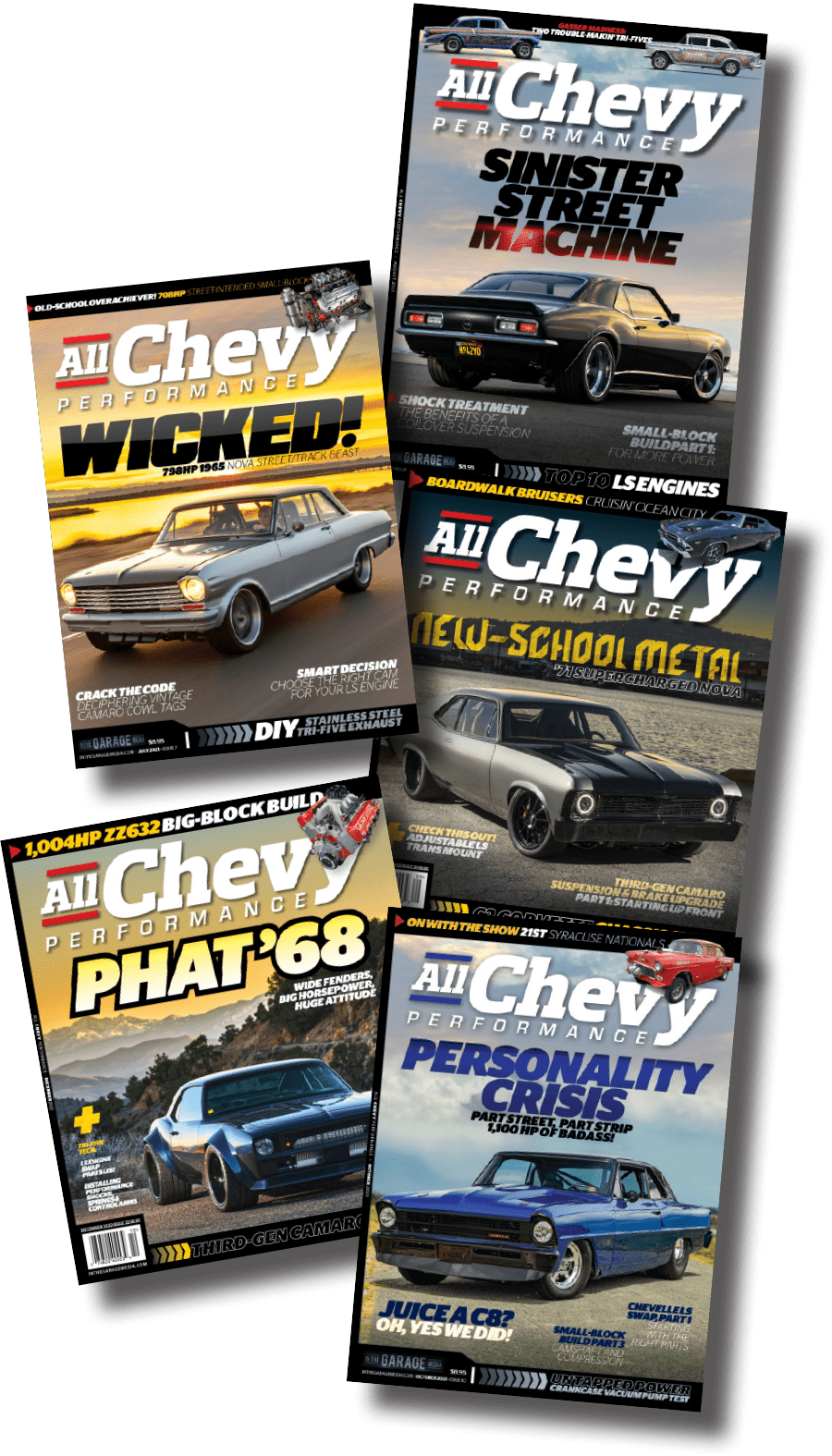
 firing up
firing up
 BY NICK LICATA
BY NICK LICATA

or many of us living in SoCal, the weather is, for the most part, cooperative in the sense it allows us to get our rides out on any given weekend regardless of the time of year—although the winter of 2023 was one for the ages, as we found out what it was like to deal with more rain than we are accustomed to. Born and raised in Southern California, that was more rain than I have ever seen in a single year. It made me get a taste for what it might be like living in a part of the country where winter weather plays a big part in weekend plans.
No, I don’t know what it’s like to shut it all down for months at a time, so before you flood my email box letting me know how this Southern California native has no clue what it’s like, remember, I said, “I got a taste for what it might be like …” And to be clear, being spoiled by mostly great weather, I didn’t much care for all that rain, either.
Thankfully, as of this writing, we are now in the middle of summer with the car show season in full swing–a time in which we are all able to take advantage of the weather and get out to cruises, car shows, and, to many, some long-distance drives in our hot rods and muscle cars.
 PARTS BIN
PARTS BIN

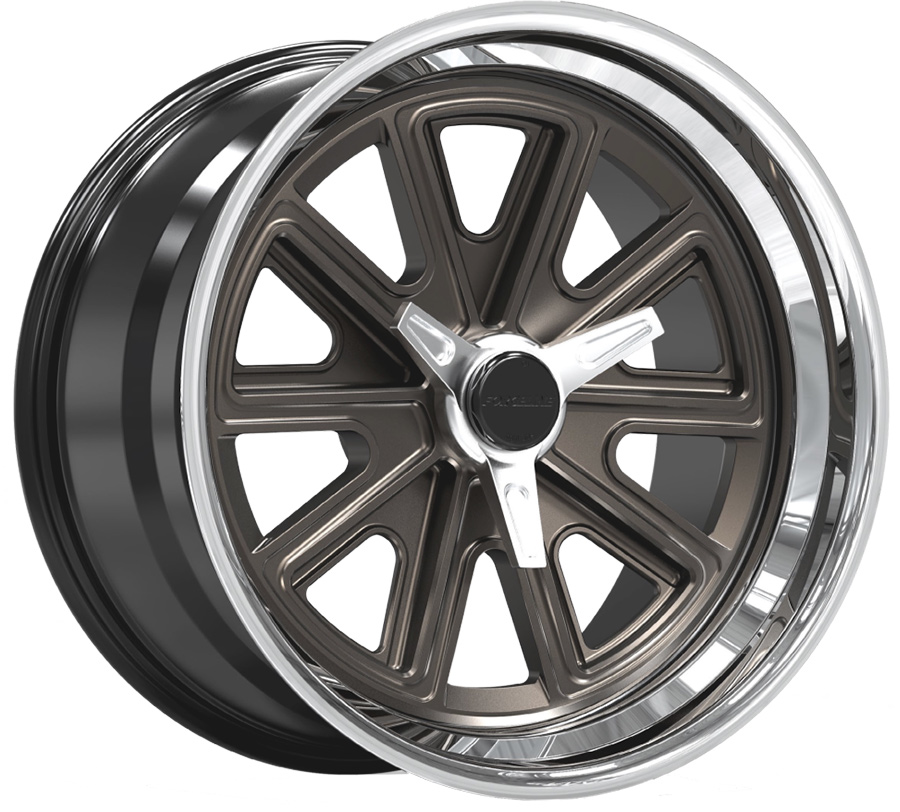
For more information, contact Forgeline by calling (800) 886-0093 or visit forgeline.com.


For more information, contact PerTronix by calling (909) 599-5955 or visit pertronixbrands.com.

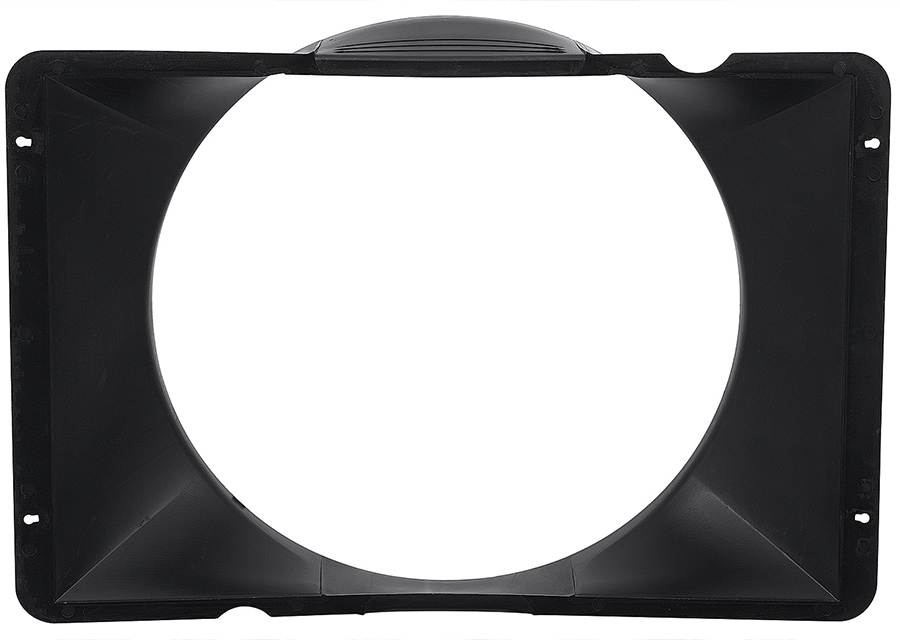
For more information, contact Classic Industries by calling (888) 816-2897 or visit classicindustries.com.
 CHEVY CONCEPTS
CHEVY CONCEPTS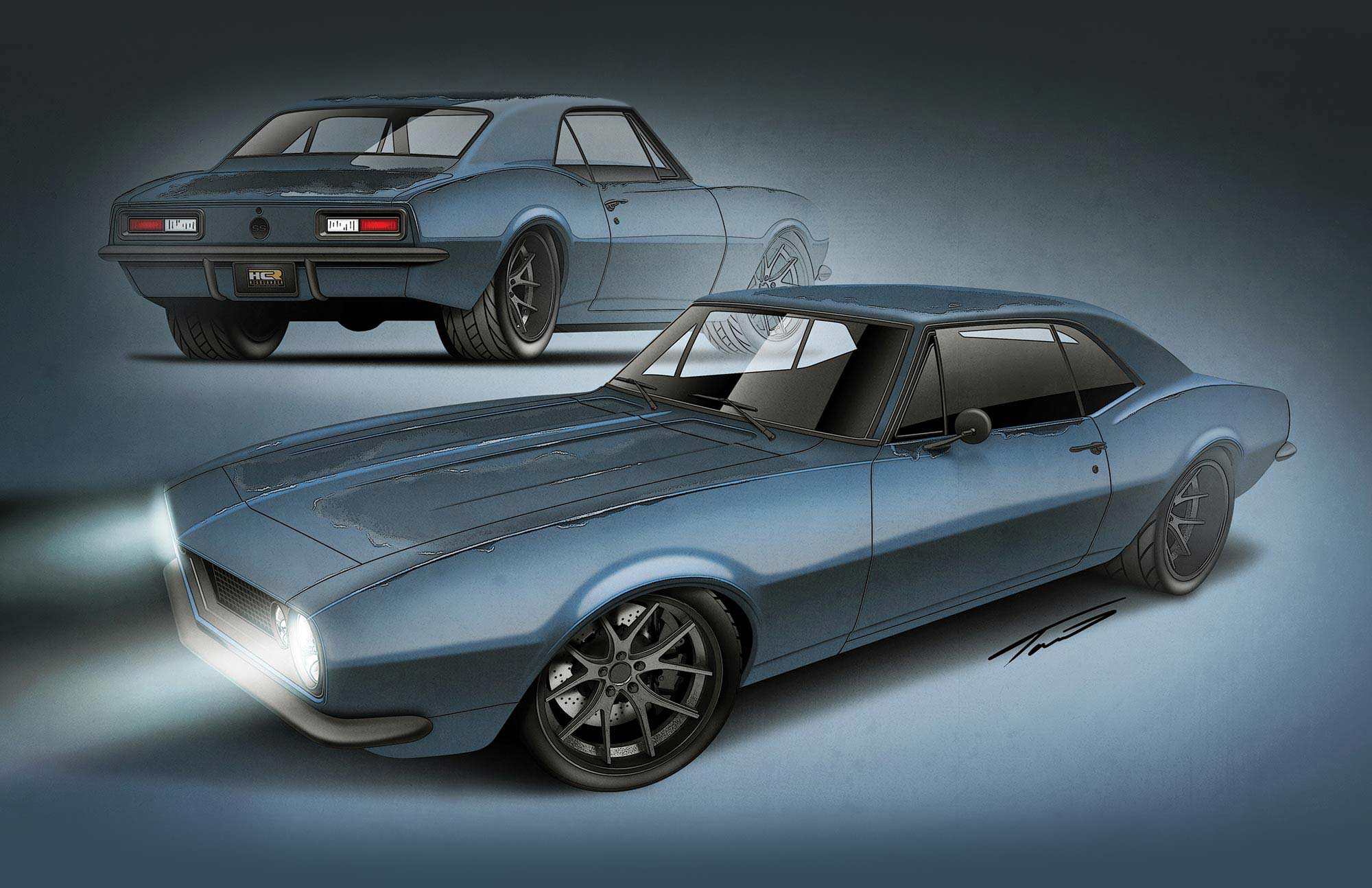
 Text & Rendering by Tavis Highlander
Text & Rendering by Tavis Highlander

atina builds have their own appeal when done right. Luckily, the guys at Charlies Custom Creations know how to put together a solid vehicle, and this one will be no exception. Starting with a stock ’67 Camaro and some well-worn paint, the shop will nip and tuck a few details here and there. The bumpers will get pulled in and finished in satin black with the rest of the trim.
Making the Camaro handle better than ever before is a Roadster Shop chassis. It’s also more powerful thanks to a Chevrolet LT4 crate engine. That new stance and power is kept in check with big brakes and modern Ferrada FR2 wheels.
 FEATURE
FEATURE
 Photography BY The Author
Photography BY The Authorike Kraemer’s indoctrination into the Chevy fold started at an early age. As a youngster growing up during the late ’60s and early ’70s, it wasn’t uncommon for kids like him to see vintage iron on the road decked out in some form of race trim. As a result, he still has some fond memories of the vehicles he saw back then that shaped—and continue to shape—his automotive tastes to this day. He recalls one particular car: “When I was 11 years old my mom regularly drove me to the swim club, and as we turned into the parking lot, there was a gas station that frequently had a jacked-up Marina Blue ’55 Chevy parked out front. It was lettered-up with Double Five on the front fender, no front bumper, and Cragars all around. As a kid that just looked like a fast car for the street,” Mike explains.
 TECH
TECH

By Barry Kluczyk  Photography by THE AUTHOR
Photography by THE AUTHOR
tructural rigidity has long been the Achilles heel of unibody cars—particularly cars from the muscle car era, such as the first- and second-generation Camaro. The issue becomes more acute with a significant jump in performance when greater horsepower and handling capability expose the functional boundaries of the body structure.
A weaker structure is not only prone to metal fatigue and even ripping in some areas, but it makes it more difficult to put all the car’s power to the pavement, whether in a straight line or in corners. It’s simply impossible to optimize launches or handling with excessive chassis flex.
So, just as long as there have been flexible unibodies, subframe connectors and other structural enhancements have been the cure—but even they have had their compromises. Typically, they’ve necessarily followed the contours of a car’s floor, which often means less-than-optimal strength. Also: Following the underside of the floorpan often reduces ground clearance while also creating somewhat of an unsightly profile.
 Feature
Feature
 Photography by John Jackson
Photography by John Jacksonom Panaseny is a car guy; he’s been one basically his whole life. What started out as helping his dad repair cars led to him buying a T-bucket as his first car. His love for Camaros began when a neighbor brought home a new ’69 convertible–white with orange stripes and an orange interior. Over the last 35 years Tom has owned, restored, modified, and, most importantly, enjoyed 11 Camaros of all generations. “Each one was unique in some way,” Tom states. “I’ve owned special editions, highly modified, low-mile, and a few one-owner Camaros. Some were show winners and some I drag raced and beat the crap out of; unfortunately, they’ve all been sold … except for one.”
 TECH
TECHInTheGarageMedia.com

1. Is it the real deal or an imposter? The numbers tell the story on your classic Chevy.


 Photography by THE AUTHOR
Photography by THE AUTHORhen it comes to finding out your car’s factory options and features, the best place to start is the vehicle identification number (VIN) plate and the trim tag. In most cases, these two stampings will not provide every piece of information you want, but it’s easily accessible and can sometimes reveal some cool details. If you want the car’s full history, other documentation like a build sheet and Protect-O-Plate are needed, but those items are often long gone on an average Chevy from the muscle car era. Finding a build sheet hidden in the interior or on top of the gas tank is like finding buried treasure. We’ll cover some details of the build sheet, but the main purpose of this article is to explain some of the nuances of the VIN and trim tag through the years.
To simplify things, we’re narrowing the focus of this article from 1960 through 1980 because there are many variations of VIN and trim tag configurations and other documentation differences. Even in that 20-year span, there are dozens of variations, sometimes within the same year of production. Variations could depend on the factory, build date, or the combination of the two factors, especially in the case of trim tags.
We’re using a few real-world examples of cars: a ’63 Impala SS convertible, a ’64 Chevelle Malibu, a ’66 Nova, a ’69 Camaro, and a ’73 Nova. This information can help you make quick observations when looking at a car to buy, or if you’re simply curious about a car’s original configuration. There aren’t enough pages in this magazine to cover every option code or configuration, but we’ll do our best to simplify the process and give you some of the highlights from popular Chevrolet applications from the ’60s and ’70s.
 Feature
Feature
 Photography by THE AUTHOR
Photography by THE AUTHORriven to perfection . . . it’s something that many Chevy owners aspire to, especially when taking on a ground-zero build with the desire to create something truly unique. With each car being as individual as the owner, it presents a personal fingerprint once completed, incorporating a stream of cutting-edge parts along with seamless fabrication to establish a truly unique vibe. The wicked ’66 Chevy Nova laid out across our pages owned by Nick Cincotti III of Billerica, Massachusetts, is representative of a vision to fuse stance, performance, and a razor-sharp look to deliver a knock-out punch.

 TECH
TECH

By Jeff Smith  Photography by The Author
Photography by The Author
he Bible says that idle hands are the devil’s workshop. Our take is a little different. When it comes to setting the idle mixture on your street-driven engine, your hands will be plenty busy adjusting, tweaking, and setting several different parameters. This may not sound like something to account for an hour or so of your time, but trust us, it’s worth the effort.
If you think about it, a street-driven engine spends much of its time running with a closed or near-closed throttle. Waiting for the engine to warm up, sitting at a stoplight, cruising down the highway, or on city streets are all conditions where the throttle is just barely open. With most carburetors, these situations require a throttle opening of roughly 10 to 15 percent. This places throttle action well within the realm of the idle circuit.
That statement may come as a bit of a surprise to many automotive enthusiasts. But if your street engine idles at roughly 12 inches of manifold vacuum or higher, then your engine probably runs down the freeway at not much more than 15 percent throttle opening, which falls within the control area of the idle circuit in your carburetor.
 Feature
Feature

 Photography by The Author
Photography by The Author
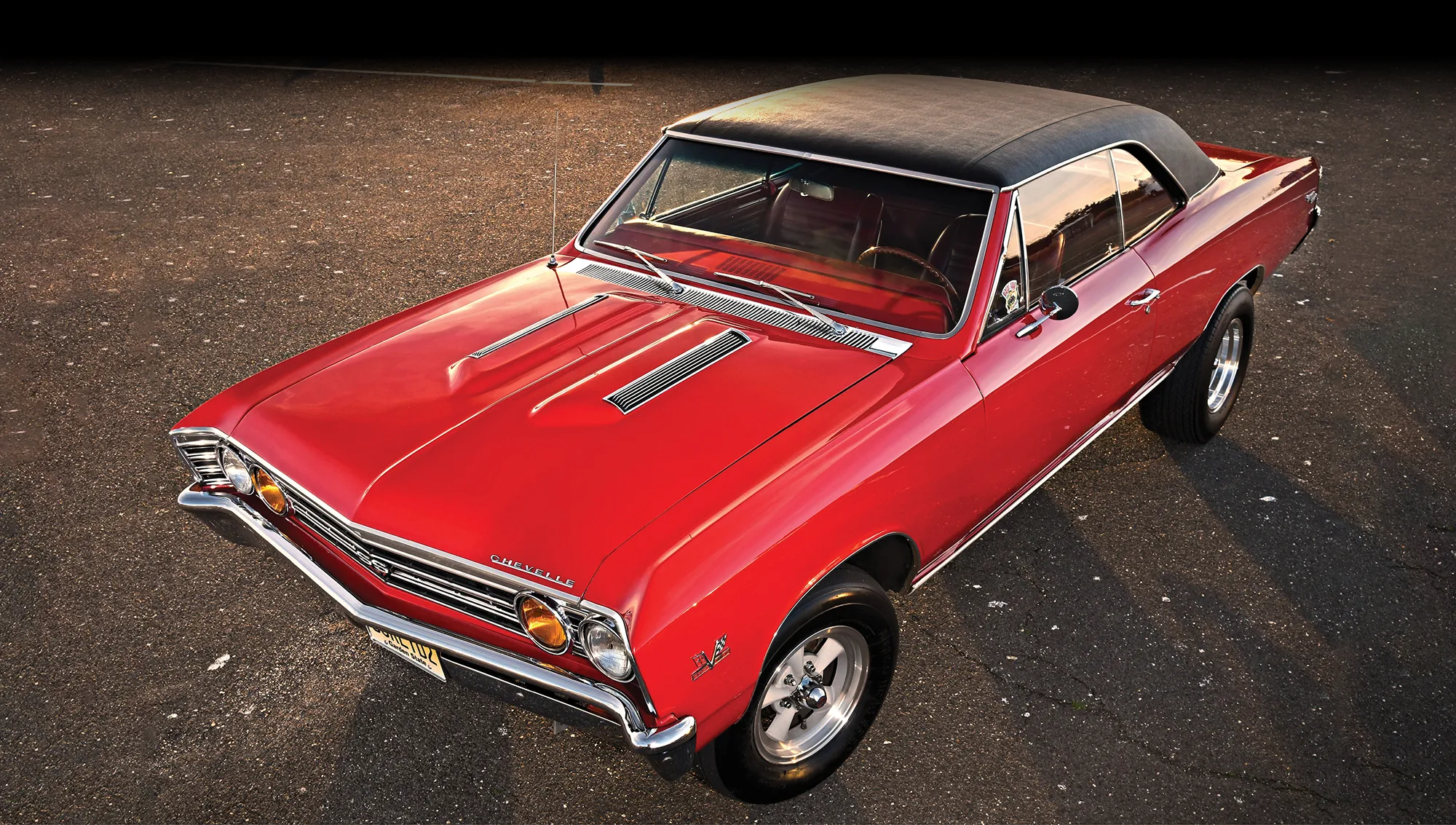
Since Raceway Park was shut down, many of the cars that battled it out on the strip have returned to the streets as beefed-up cruisers. “The Asbury Park Circuit, our old cruising turf, has come back and breathed new life into the scene at the Jersey Shore,” Curly reports.
Curly has spent his entire life in the Keansburg area of New Jersey, just blocks from the bay and a few miles from the ocean. “Growing up, my dad had nothing but Chevys in the driveway, and I learned how to drive his ’55 Chevy hardtop when I was just 15,” Curly reminisces. “I was drawn to its design from the start and since then I’ve owned at least 10 more ’55s. I still have my last one. It’s got a built-up small-block pushing 410 hp.”
 TECH
TECH
By Jeff Smith  Photography by The Author
Photography by The Author
hile we all love our older muscle cars for their style and performance, this is especially true for this writer when it comes to first-generation Chevelles. While they have tons of flair, they do lack a bit of sophistication when it comes to things like sealing the interior. This is nowhere more evident than the suggestion of a seal between the steering column and the floorpan. I own more than a couple of A-bodies that sport a near ¼-inch gap around the steering column that allows hot underhood air, dirt, and fumes to funnel straight up the steering column at road speeds.
I’m in the midst of a complete restoration on our ’66 SS396 and I noticed a small ad in this publication for a firewall seal designed to solve this problem. JJ’s Rods is owned by Jeff Johnson. He experienced the same issue with many street rods and decided to come up with an answer for this little dilemma. This led to his E-Z Firewall Seal that he has now expanded into the muscle car market.
The E-Z Firewall Seal has won numerous street rod awards along with SEMA’s Product of the Year award in 2018 for its elegant and simple solution. With regard to the Chevelle and GM A-body market, Johnson offers a couple of different kits depending upon whether the car is equipped with an automatic or, as in our case, a floor-mounted four-speed to accommodate the manual clutch linkage. JJ’s offers a similar part specifically for early Camaros and Firebirds as well as ’69-74 Novas.
 Feature
FeatureBY NICK LICATA  Photography by Wes Allison
Photography by Wes Allison
f you grew up in and around the ’60s and ’70s you no doubt have spent some time in the back of a station wagon of some kind–no seatbelts, rear window down, pulling in enough exhaust fumes to knock out an entire Little League team cranked up on Red Vines and Coca-Cola. Ford, Chevy, Pontiac, Chrysler, Jeep, Buick, Oldsmobile, AMC, Cadillac, and more all made extended family haulers of just about every shape and size. Back then we didn’t have thoughts about them being cool—probably due to just about every family having one, and in our youthful eyes, the more wood siding, the less cool they were. It wouldn’t be long before the minivan replaced the station wagon, which has since been rolled over by today’s SUV.

 EVENT
EVENT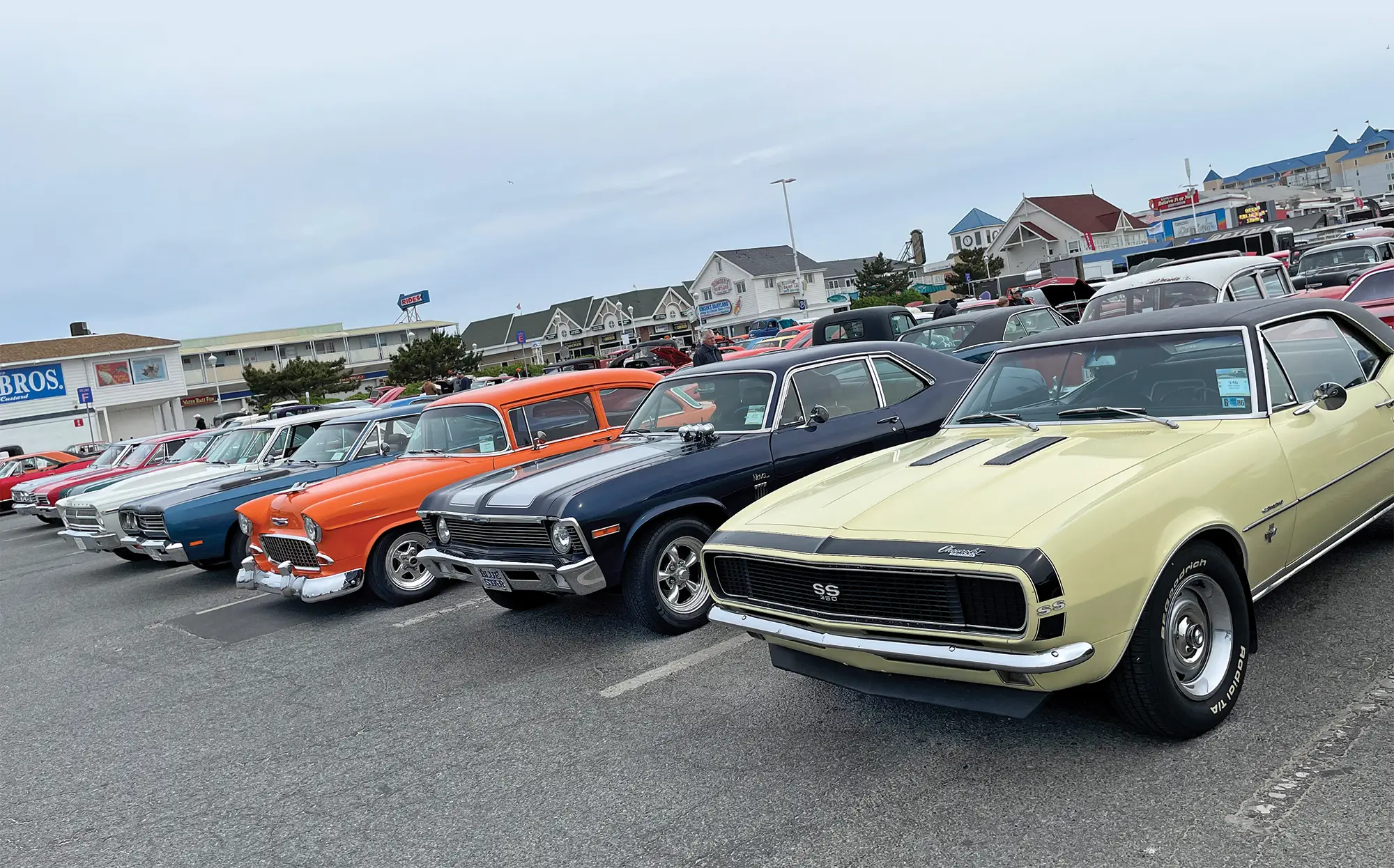
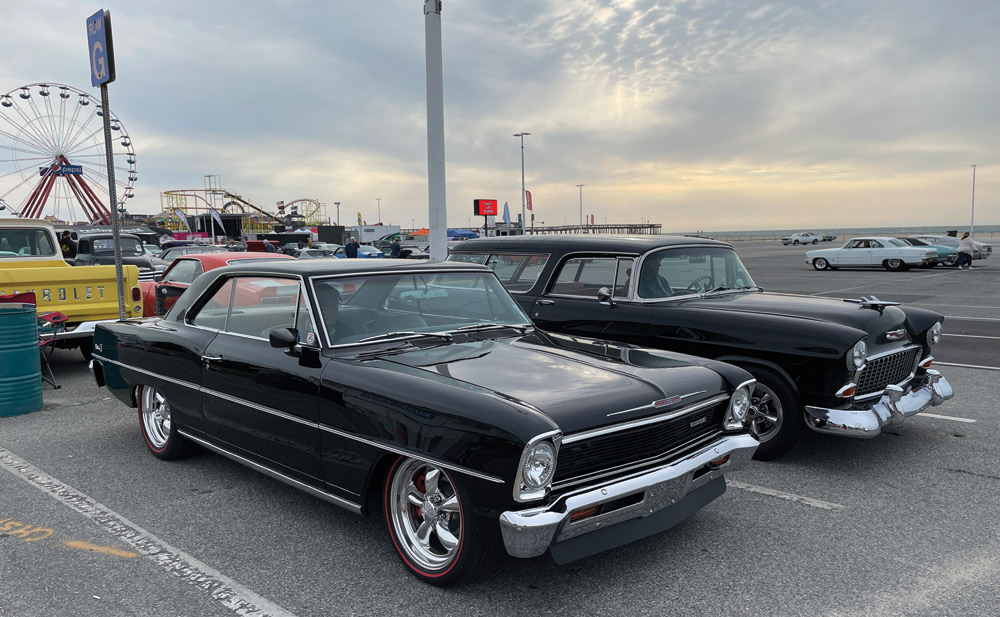
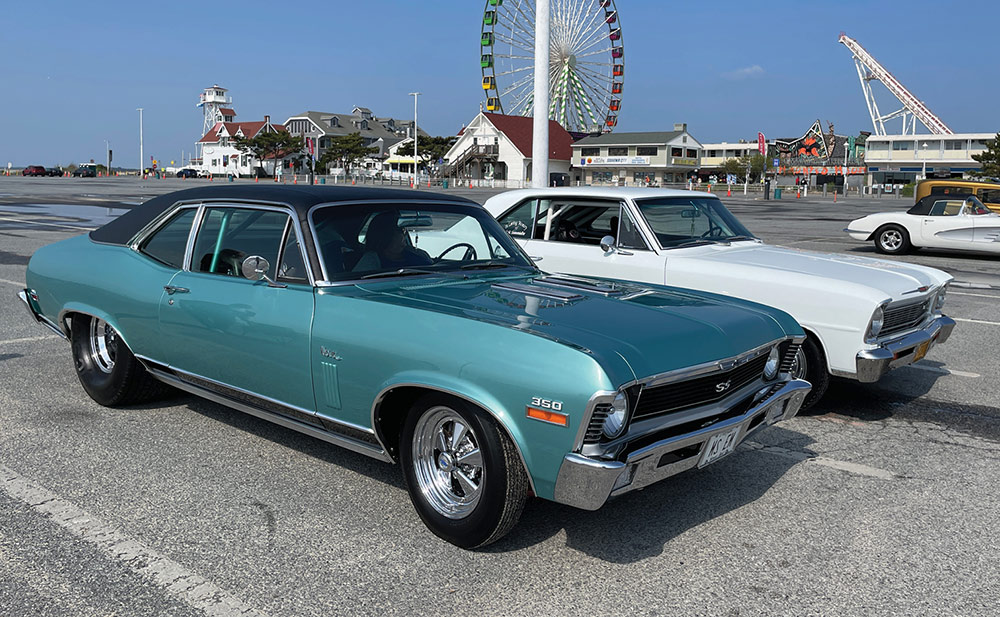
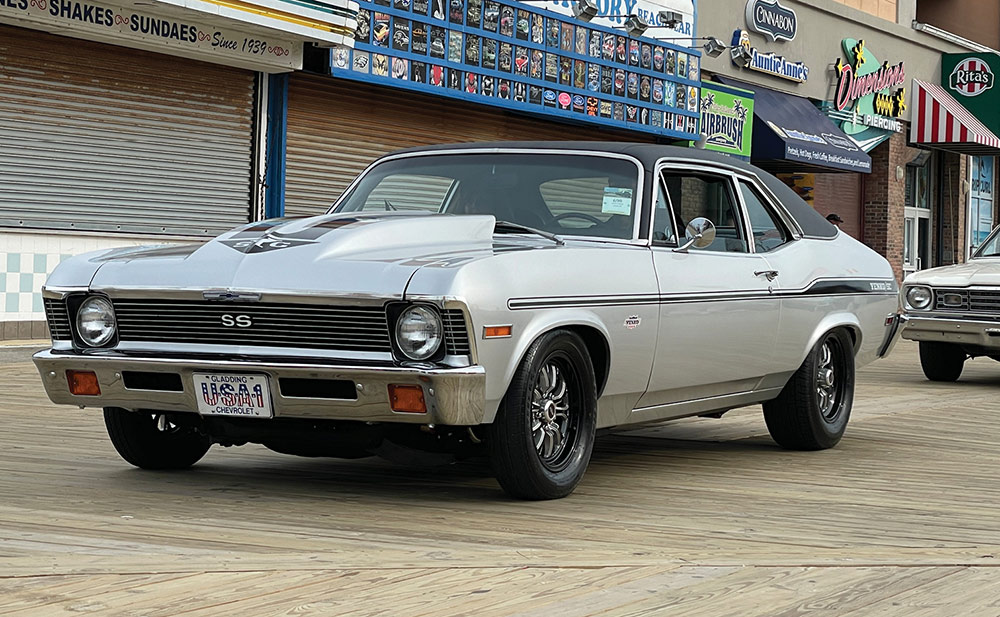
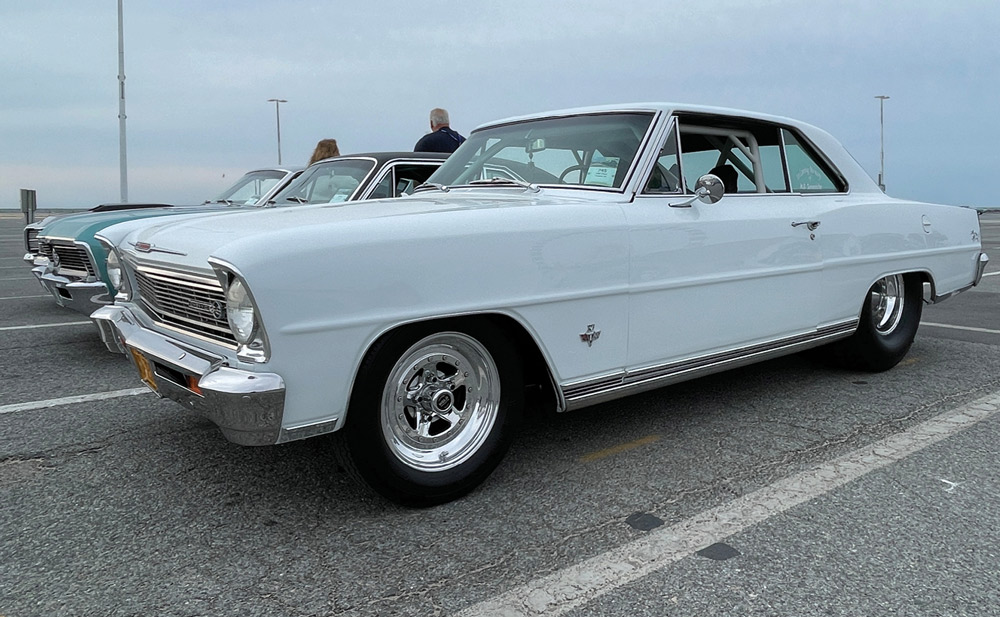






 Photography BY THE AUTHOR
Photography BY THE AUTHORhere’s no better way to kick off the outdoor event season than topping off the tank and heading out to the promised land where wicked amounts of horsepower get a chance to mingle with sun and surf for the ultimate performance car weekend. Devoted Chevy fans who live for hopped-up mills, packing everything from supercharged big-blocks to turbocharged LS V-8s, got everything they hoped for while attending the 32nd Annual Cruisin’ Ocean City event held in Ocean City, Maryland. If you want to experience the fun-meter dialed to the max, the quaint little seaside community was the place to be, with well over 3,000 registered car and truck owners pulling into town to cruise the 10-mile strip and dig just what makes the event so very special.
Nothing is more welcoming than the sight of endless manicured beaches accented by the sounds of surf while checking out numerous old-school amusement rides along with arcades and plenty of food vendors commanding your full attention with scents you’ll remember since you were knee-high to a Camaro bumper.
With credentials in hand after checking into the Convention Center, it’s a short hop over to the “Inlet,” which serves as the epicenter for the weekend’s festivities. Accommodating up to 1,500 of the region’s coolest muscle cars, classic trucks, hot rods, and classics, it’s easy to go into sensory overload thanks to all the blinding chrome and candy coatings shimmering under the sun. Thanks to all the exciting mini events happening across the strip throughout the weekend, the parking turns over regularly, giving everyone a chance to stop in and visit.
 TECH
TECH
 By ACP STAFF
By ACP STAFF
t one time selecting a Chevrolet starter was easy enough, as there really was only one choice. However, since the late ’80s, the OEMs have steadily moved away from direct-drive starters and toward gear-reduction starters, and the aftermarket has followed suit.
Although gear-reduction starters are more complex, making them more expensive, they are also smaller, lighter, and more efficient. These starters typically achieve a gear reduction ratio of 4:1. These starters use smaller, faster motors that draw less amperage. A 4:1 gear reduction ratio also means that a gear-reduction starter can often produce more torque than a much larger, heavier, direct-drive starter. In some cases, a direct-drive starter can weigh as much as two times more than a comparable gear-reduction unit. That represents a significant power/torque to weight ratio benefit, and it also means they are physically smaller and often easier to install.
While gear-reduction starters have a variety of advantages in some cases, when originality is important, a direct-drive starter may be more desirable. Regardless of the type of starter used, when it comes to Gen I and II Chevy small-block starters there are two basic choices, and which is used depends on the diameter and tooth count of the ring gear on the flexplate or flywheel. The large ring gears are 14 inches in diameter with 168 teeth and require starters with offset mounting holes. The smaller ring gears are 123/4 inches in diameter with 153 teeth and the proper starters have two holes parallel with the back of the block.
Advertiser
- American Autowire31
- Art Morrison Enterprises51
- Auto Metal Direct55
- Automotive Racing Products9
- Borgeson Universal Co.29
- Classic Industries39
- Classic Performance Products4-5, 83, 92
- Dakota Digital91
- FiTech EFI77
- Forgeline Motorsports77
- Golden Star Classic Auto Parts7
- Granatelli Motor Sports69
- Heidts Suspension Systems59
- JJ’s Rod & Custom89
- Lokar2
- National Street Rod Association57
- Original Parts Group59
- PerTronix13
- Powermaster Performance69
- ProCharger45
- Scott’s Hotrods83
- Speedway Motors11
- That’s Great News89
- Thermo-Tec Automotive89
- Tuff Stuff Performance Accessories75
- Vintage Air6
- Wilwood Engineering23
- Year One83








